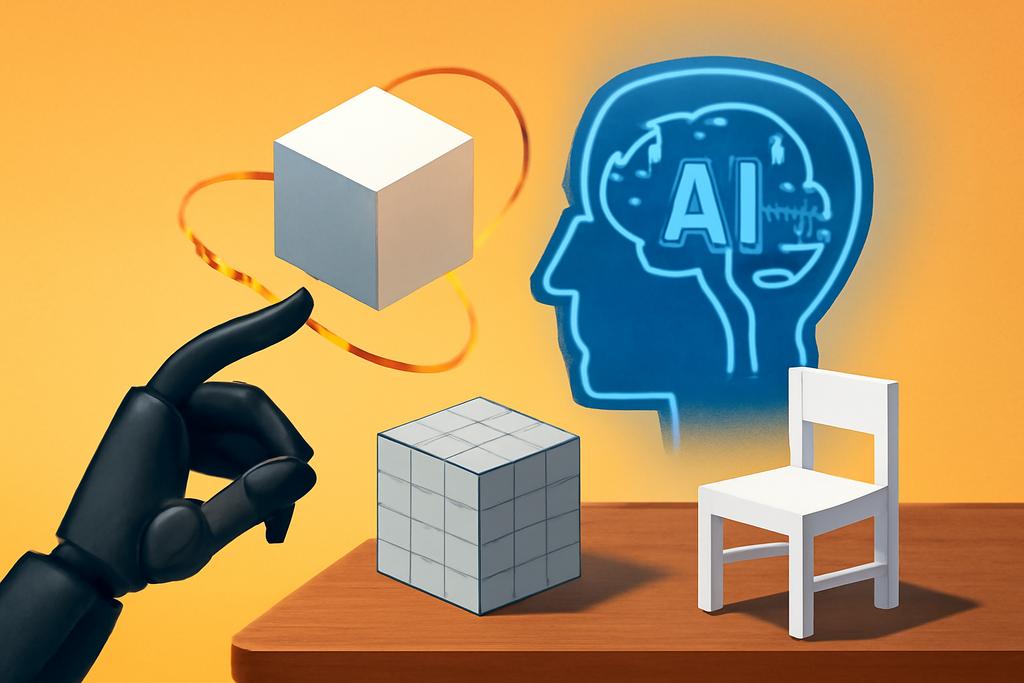Forget digital worlds; artificial intelligence is venturing into the physical realm. Researchers at Nanyang Technological University and Shanghai AI Lab have developed PhysX, a groundbreaking system that generates not just 3D models on a screen, but objects you can hold and interact with. This isn’t about rendering pretty pictures; it’s about creating objects with accurate physical properties—weight, material, how they move and interact—a leap that could transform manufacturing, robotics, and even how we design video games.
Bridging the Gap Between Virtual and Real
Existing 3D modeling focuses on surface appearances and shapes, neglecting the vital physics of how things behave in the real world. Imagine a virtual chair that looks perfect, but collapses under your weight because the AI didn’t understand the properties of wood. That’s the shortcoming PhysX addresses. Lead researchers Ziang Cao, Zhaoxi Chen, Liang Pan, and Ziwei Liu recognized this crucial oversight and set about creating a system that understands and replicates these crucial physical characteristics.
The key is a new dataset, PhysXNet. This isn’t just a collection of 3D scans; each object is meticulously annotated with details like its dimensions, material composition (including properties like density and elasticity), how its parts move relative to each other, and what actions it allows (like sitting on a chair or typing on a keyboard). This is a massive undertaking, a painstaking process of giving the AI a granular understanding of the physical world.
More Than Just a Database: A Human-in-the-Loop Approach
PhysXNet isn’t just a collection of 3D scans; it’s a testament to innovative data annotation. The team developed a human-in-the-loop system, combining the speed of AI with the judgment of human experts. A vision-language model (VLM) automates much of the data labeling, but human experts step in to refine the annotations, especially for complex movements. This blend of artificial and human intelligence is critical. The AI can process vast amounts of data quickly, but humans ensure accuracy and handle nuances the AI might miss—think the subtle flexibility of a fabric chair vs. the rigidity of a metal desk. This combined approach ensures the dataset’s accuracy and detail, paving the way for more realistic and useful AI-generated 3D models.
PhysXGen: Bringing Physics to Life
PhysXNet provides the foundation, but PhysXGen is the engine. This is the model that uses the dataset to generate new 3D objects with accurate physical properties. The architecture is clever; it uses a dual-branch approach to model the relationship between the object’s shape and its physical properties. One branch focuses on geometry and appearance, while the other branch handles the physics. This clever design enables the model to maintain high-quality rendering while ensuring realistic physical behavior.
The implications are far-reaching. Think of architects designing buildings that can withstand earthquakes, or engineers creating robots that interact with their environments seamlessly. This technology could revolutionize the simulation of complex physical phenomena, such as fluid dynamics, material deformation, and rigid-body mechanics.
Beyond Simulation: The Potential for Physical Manufacturing
But the potential extends beyond simulation. Imagine a future where AI designs and 3D prints custom furniture or tools based on your exact needs. This technology could democratize manufacturing, allowing for rapid prototyping and personalized products at a scale we’ve never seen before. The current process of transforming a digital design into a tangible product requires intricate planning and coordination, often involving multiple teams, expensive machinery, and lengthy periods of time. PhysX offers a revolutionary alternative. This system could drastically reduce the time and resources required to translate design concepts into functional products, facilitating agility and cost-effectiveness in the manufacturing sector.
The Challenges Ahead
PhysX is a significant step forward, but challenges remain. Generating highly detailed objects with intricate movements is still computationally expensive, and ensuring perfect accuracy in predicting physical behavior remains an ongoing challenge. The system still faces limitations in handling complex materials and fine-grained behaviors, suggesting that further refinement and development are essential to achieving flawless integration into diverse real-world applications.
A New Era of Physical AI
The work of Cao, Chen, Pan, and Liu marks a turning point. We’re moving beyond AI that simply simulates the world to AI that understands and builds it. PhysX demonstrates that the digital and physical worlds are no longer separate; they are merging, opening up unprecedented possibilities for innovation and creation. The implications span diverse sectors, hinting at a transformative era where the lines between digital design and physical reality become increasingly blurred.










